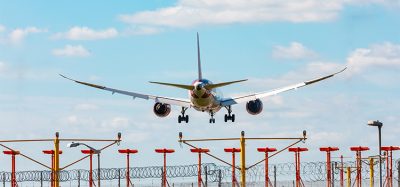Hub traffic management at Munich Airport
Posted: 10 June 2011 | Ingo Anspach, Head of Press Department and Communications at Munich Airport | No comments yet
At Munich Airport a total workforce of 30,000 employees with more than 500 companies ensure that more than 390,000 take-offs and landings with 35 million passengers can be handled every year.
A decisive factor in the quality of the passenger experience and comfort at Europe’s seventh largest airport is the smooth functioning interplay of the airport operating company, air traffic control, airlines, authorities and service providers. From the passengers’ point of view, the results of this team effort are more than respectable. In the world’s largest passenger survey, in which Skytrax collected responses from more than 11 million passengers, Munich has just been voted Europe’s best airport for the sixth time. A major factor behind these results is the continuously optimised teamwork manifested within many innovative projects.
At Munich Airport a total workforce of 30,000 employees with more than 500 companies ensure that more than 390,000 take-offs and landings with 35 million passengers can be handled every year.
A decisive factor in the quality of the passenger experience and comfort at Europe’s seventh largest airport is the smooth functioning interplay of the airport operating company, air traffic control, airlines, authorities and service providers. From the passengers’ point of view, the results of this team effort are more than respectable. In the world’s largest passenger survey, in which Skytrax collected responses from more than 11 million passengers, Munich has just been voted Europe’s best airport for the sixth time. A major factor behind these results is the continuously optimised teamwork manifested within many innovative projects.
Four years ago Airport Collaborative Decision Making (A-CDM) was launched at Munich Airport and until recently was not implemented at any other European airport. Today, this co-operative concept, embracing all divisions of the company, is now firmly established as part of everyday operations.
Join us live: Shaping the Next Generation of Hold Baggage and Air Cargo Screening
Join us live for an insightful webinar on 11th December at 14:00 GMT, in collaboration with Smiths Detection, as we explore the strategic balance of operational efficiency, regulatory compliance, and sustainability in high-volume security environments.
This session offers a focused look into future-proofing your security strategy.
Key learning points
- Cost Reduction: Strategies to minimize bag travel time while simultaneously reducing operational costs.
- Regulatory Roadmap: Insights into the next wave of regulatory changes and their impact on future investment decisions.
- Sustainable Systems: Practical approaches to building sustainability into security systems and lowering the total cost of ownership (TCO).
- Scalable Solutions: Real-world examples of scalable systems supporting current airport growth and preparing for tomorrow.
Register now for expert insights, case studies, and actionable strategies on operational efficiency!
One of the best ways to showcase the advantages of A-CDM is to profile a recent long haul flight from Munich to Germany. Flight LH 762 is scheduled to depart from Munich at 08:25. It is a daily service operated by Lufthansa with AIRBUS A340-600 widebody jets. On Wednesday afternoon the airline knows that 266 travellers have tickets for that day’s flight, and that 151 of them will take connecting flights to Munich Airport. The passengers changing in Munich are coming from 28 different German and European cities, from Ancona to Zurich, including 45 flying in from Italian airports alone.
In the Munich Airport cargo terminal, workers start assembling the first palettes for the evening flight to Delhi at around midday. Some 10 tonnes of co-loaded freight booked for the cargo hold of the passenger flight to India, including machine parts, optical measurement equipment and pharmaceutical products, as well as airmail from North America, are making the trip to Asia via Munich.
The Airbus that will make the flight to the Indian Capital was already in service high over the Atlantic early that morning. After taking off from Boston that evening the plane landed in Munich just before 10:00. That afternoon the aircraft is towed to the Lufthansa maintenance hangar where the airline’s technicians check all essential technical functions. The maintenance schedule requires the ramp check to be carried out every 24 hours. Experts intensely assess the general condition of the aircraft both inside and out. This includes an inspection of the tyres and oil levels in all engines. After the two and a half hour check, the plane is cleared for the flight.
At 1835 the aircraft can be parked at position 224, terminal 2, ready for its next deployment. As the first of the passengers are checking in for the flight, the pilots and cabin crew are meeting at the Lufthansa Flight Operation Centre for an advanced briefing on the long haul flight ahead of them.
To optimise the information flow between the various parties involved, Munich Airport implemented Airport-Collaborative Decision Making (A-CDM) in 2007 after approximately three years development and a one year testing phase. When A-CDM was launched, no other European airport was using this concept, which is based on the realisation that processes on the ground can be made much more efficient through improved communi – cation. Under A-CDM the Target Off Block Time (TOBT) i.e. the time when the aircraft must leave its parking position, becomes the key parameter for everyone concerned. Lufthansa has specified 20:25 as the TOBT for flight LH762. This is the exact take off time indicated in the timetable and at that moment there are no indication of delays.
The applicable TOBT for the aircraft currently being prepared for departure is shown in the docking system display, so that all aircraft handlers and suppliers involved know by when they must complete their work. It is crucial for the success of A-CDM for any changes in TOBT to be identified and communicated at any early stage. The causes which may result in such delays are numerous, ranging from problems in airport operations, to heavy air traffic or weather related traffic restrictions near the destination.
At 18:40 Airbus A340 will take on 80,000 litres of fuel for the flight for Dehli, taking about an hour to pump all the fuel into the tanks. Alongside the plane, a large catering truck moves into position with a hydraulic hoist. The Lufthansa subsidiary LSG Sky Chefs use the vehicle to deliver the ‘meals on wheels’ typically supplied at airports. Passengers in business class and first class will be offered three meals en route, while those in the economy seats will be served twice. In addition to caviar, spring chicken breast, swordfish along with wines, juices and spirits, the company also supplies newspapers, magazines, duty free goods, baby food, aspirin and nicotine patches. Whilst this is taking place, five employees of AeroGround, a subsidiary of the airport operating company are in charge of ground handling operations for the large Lufthansa jets, start loading the freight destined for Delhi and the first baggage items in the aircraft’s cargo hold. A total of seven palettes of freight will be stowed in the belly of the aircraft before the first baggage containers, with 240 bags, are taken on board.
In the hub control centre set up under the roof of terminal 2, a Lufthansa event controller is responsible for flight LH 762. Information on the handling process and the latest data on the connecting passengers expected to board the flight from various flights all land on this desk. Two of these feeder flights are currently running behind schedule, the connection to Delhi could prove tight. These flights are not expected to land in Munich until 20:10, which will cut the connecting time for the transit passengers to just 15 minutes. A normal transit process through the terminal is not possible in such a short space of time. Consequently, the event controller acts to reserve the ramp direct service for both flights. This shuttle operation snaps into action whenever passengers are at risk of missing their connecting flights. In this case, the passengers and their luggage will be picked up at the park position of the arriving aircraft and driven straight to the aircraft.
The TOBT time is now being displayed on the monitors of the airport’s traffic management office, air traffic control and Hub control centre as well as the docking display system. In case of any delays arising now, Lufthansa must respond immediately by adjusting the target time. Any deviation from the designated TOBT has wide reaching effects. For example, if the aircraft occupies its park position longer then planned, the plane scheduled to use it may have to be relocated, which would in turn mean a reassignment of the gates.
Any scheduling changes of this kind are particularly serious for air traffic controllers. They must check immediately whether they can still fit the flight seamlessly into scheduled operations on the two runways despite the new ‘off block’ time. For this purpose, they will use a sequence planning tool to calculate the point in time when the taxiing aircraft will reach the runway system. To avoid line-ups and emissions, aircraft are not cleared to taxi until the assigned runway actually offers an available time window for take-off. Air traffic control must also clarify any possible implications of a re-scheduled target startup approval time. This time is the target at which the aircraft can expect clearance to start the engines.
For this particular flight, the times hold firm, as all processes are completed on time, the preparations are nearing an end just before 19:30. With the exception of the four connecting passengers, who will be driven straight from their feeder flights to the position 224. At exactly 20:25, the pilot receives clearance to start the engines, the apron control centre in the tower are requested clearance for pushback.
At the bridge leaning to the southern runway, guidance of the departing long-haul flight is handed over to air traffic control, which then, at 2025, issues clearance for take-off to the aircraft waiting at the Eastern end of the southern runway. The fact that the take-off was successfully scheduled to avoid waiting at the head of the runway can be credited to the A-CDM at Munich. The waiting times have decreased by an average of 30% per flight. This also means annual savings of approximately 2500 tonnes of fuel per year – with a corresponding decrease in CO2 emmssions. At 20:35 the aircraft takes off for its night flight to the Indian capital, where it will arrive on Thursday morning at 07:10. The same aircraft is due back to Munich on Thursday afternoon at 13:40 before departing apgain in the evening for Shanghai. Before this flight, however, the airline staff, airport and various suppliers and service suppliers will once again have their hands full as they yet again execute a smooth and reliable handling operation.
About the Author
Ingo Anspach joined the corporate communication of Munich Airport in 1992, just seven weeks before the new airport opened. Since 2001 he has been head of the press department which is responsible for providing the German and foreign media with current information about trends and developments at Munich Airport.
Stay Connected with International Airport Review — Subscribe for Free!
Get exclusive access to the latest airport and aviation industry insights from International Airport Review — tailored to your interests.
✅ Expert-Led Webinars – Gain insights from global aviation leaders
✅ Weekly News & Reports – Airport innovation, thought leadership, and industry trends
✅ Exclusive Industry Insights – Discover cutting-edge technologies shaping the future of air travel
✅ International Airport Summit – Join our flagship event to network with industry leaders and explore the latest advancements
Choose the updates that matter most to you.
Sign up now to stay informed, inspired, and connected — all for free!
Thank you for being part of our aviation community. Let’s keep shaping the future of airports together!
Issue
Related topics
Air traffic control/management (ATC/ATM), Airport Collaborative Decision Making (A-CDM)

















